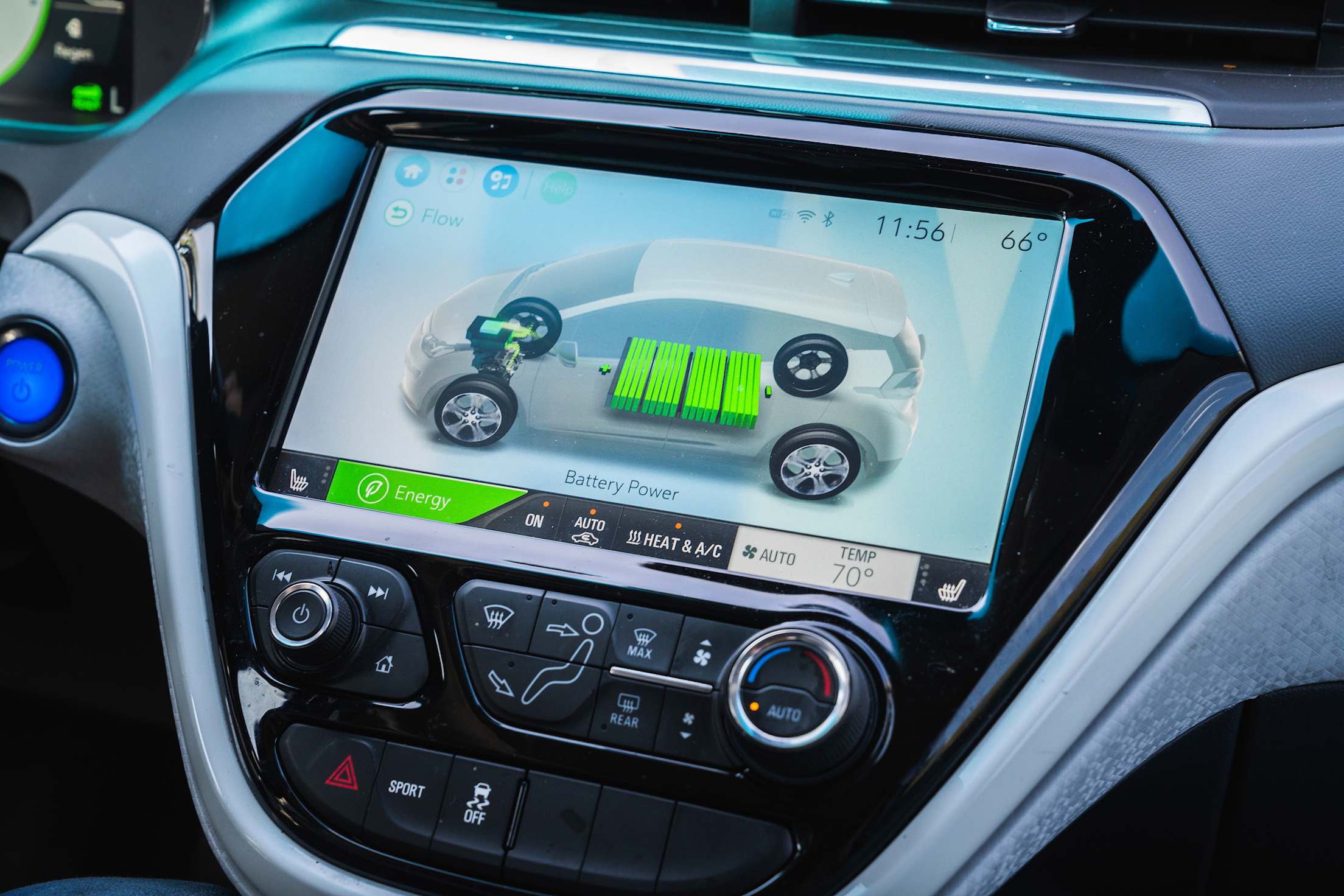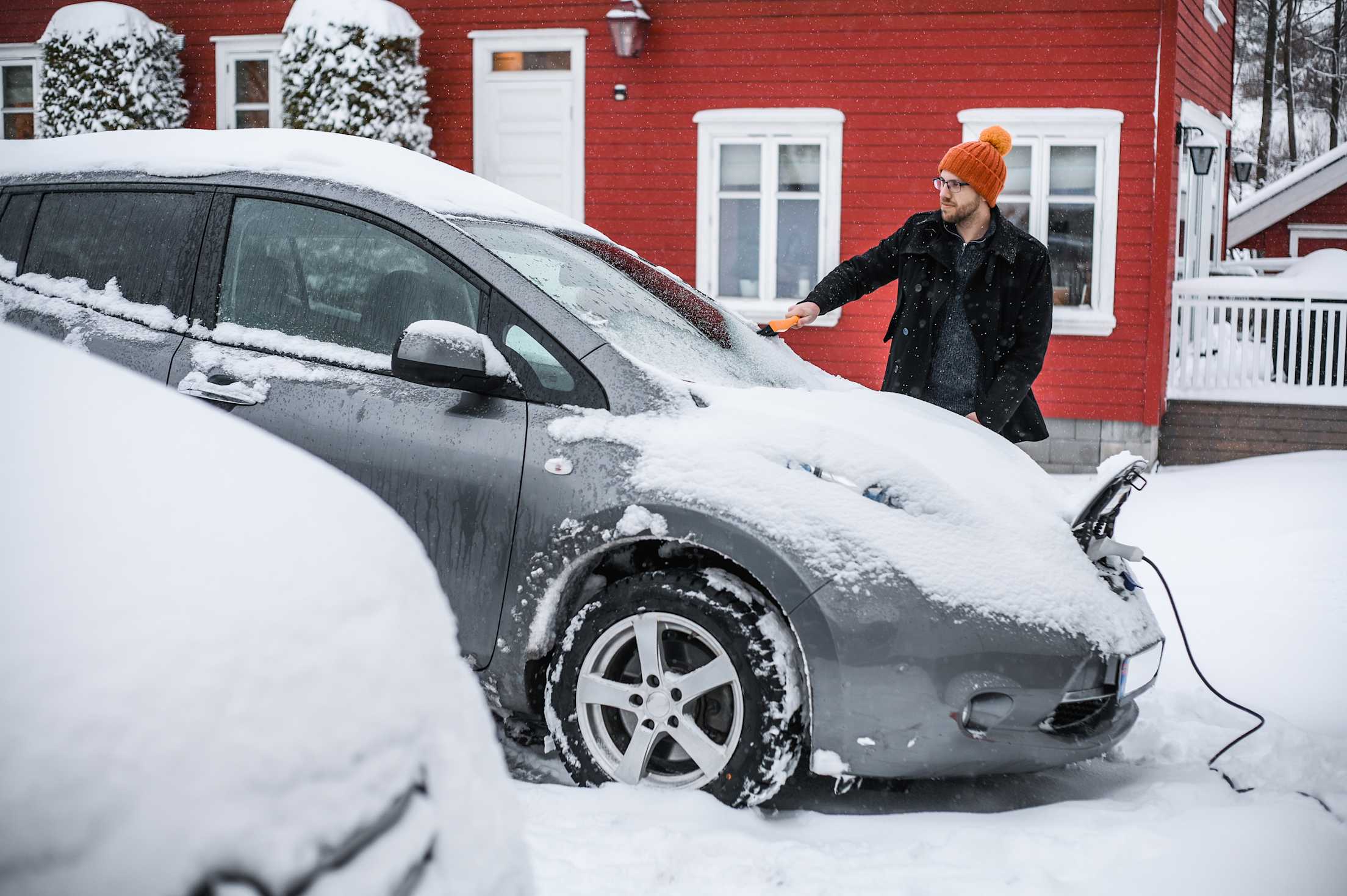
Tips to Improve EV Range
Drive further between each charge.

Seemingly simple changes to your driving or your environment can drastically affect your range, the estimated distance you can travel on a single charge. Inclement weather, stop-and-go traffic, and your mountain bike on the roof can all impact how far you can drive before you need to plug in again.
The good news is that there are many things you can do to increase your range. While many of these tips apply to vehicles of any kind, they are especially helpful if you are trying to extend your electric vehicles’s range on a long road trip or on a cold day. Here are 10 tips to get the most out of your EV’s range.
1. Drive during temperate times of day.
The battery in your car performs best within a specific temperature range, and any temperature above or below that range means that the car has to warm or cool the battery. When unplugged, the car draws down the battery to maintain its optimal temperatures.
Cold temperatures in particular can decrease driving range because the battery needs to use more energy to maintain optimal temperatures for driving and charging. Temperatures around or below freezing may also limit the car’s ability to use regenerative braking until the battery is warmer. The average electric vehicle driving range decreases 12 percent when temperatures dip below 20 degrees fahrenheit, according to a 2019 study from AAA. Colder temperatures also make it more difficult for your battery to accept charge, which means you regain range at a slower rate.
While it’s less impactful than a chilly winter’s day, the height of summer can also eat into your range. When the thermometer climbs past 95 degrees, efficiency decreases by 4 percent from the weather alone, according to the AAA range study.

2. Use seat warmers instead of the cabin heater.
In a gas-powered vehicle, excess heat from the engine is piped into the cabin to keep you comfortable while you drive. In an electric vehicle, there isn’t any so-called ‘free heat’ to enjoy. According to Nissan, warming the cabin with the climate control system when the outside temperature is below freezing uses more electricity and reduces range more than when the temperature is above 32°F. Instead of cranking up the cabin heater, use the significantly more efficient seat and steering wheel heaters (if equipped), which will also warm you faster than waiting for the inside air to heat up.
Smart Tip: If you need to defog the windows while driving, turn off the defrosters or air conditioning and high fan speed once the windows are clear again rather than leaving them on for an extended time.
3. Strategically cool the cabin.
It’s likely no surprise that running the air conditioning on a hot day decreases your range, but it can have a bigger impact than you might expect. Continuously running the air conditioner can reduce your range by an additional 13 percent on a hot day, according to the AAA range study. When you’re cruising around town, roll down the windows to cool off. Once you’re approaching highway speeds, Chevy, Nissan, and Tesla all recommend keeping the windows up to reduce drag and using the A/C as needed instead. Keep the fan on the lowest comfortable setting when the AC is on to limit how much energy it uses.

4. Take advantage of preconditioning when plugged in.
Most EVs allow you to set a desired cabin temperature and departure time so you can blissfully drive off instead of shivering while you wait for the heater to kick on. When plugged in, the car will draw on the charger rather than the battery to heat or cool the interior. Some vehicles, including Teslas, also let you warm up the battery while plugged in so you can access as much range as possible—some stored energy is not available for use until the battery is within its optimal temperature range.
5. Slow down.
EV range is maximized at 50 mph and below because higher speeds require more energy to overcome wind resistance and drag. Follow speed limits, and opt for routes that keep you on slower streets rather than the highway to maximize efficiency. You’ll also be less likely to need aggressive stops when you’re moving slower, which can reduce your range.
6. Avoid sharp accelerations and stops.
No matter the type of fuel, vehicles use the most energy when accelerating, according to the U.S. Department of Energy. Stretch your range by easing up on the pedal and turning on the ‘eco’ setting (‘Chill Mode’ on a Tesla) to smooth out acceleration. Hard braking also wastes energy, while slower stops are ideal for replenishing your range with regenerative braking. Leave extra room behind the car in front of you and coast to decelerate whenever possible. Keep an eye on traffic ahead, and try to time stop lights so you can maintain momentum and avoid unnecessary braking and acceleration. Use cruise control on dry, ice-free highways to minimize speed fluctuations.
7. Plan your trips.
It’s more efficient for your time and your battery to combine errands and optimize your route to minimize backtracking or frequent trips. Short trips still require bringing the battery (and often the cabin) up to a specific temperature, which can mean extra energy consumption in comparison to one longer trip.

8. Remove unnecessary weight.
The box of donations you keep forgetting to drop off, the new box of cat litter you haven't gotten around to taking inside, tennis rackets you haven’t used in months, and toys your kids have outgrown all add up. An extra 100 pounds can reduce efficiency by up to 1 percent, and it has the biggest impact on smaller vehicles. Deep clean your car and keep just the essentials. (Bonus, removing clutter will also help you stay safer inside.) In the winter, brush off any snow and ice, which add unnecessary weight and drag.
9. Ditch extra drag.
Cargo boxes and roof racks can help you haul larger items and make room for passengers, but they can also significantly increase aerodynamic drag and diminish your range. A large, blunt cargo box on the roof can reduce fuel economy by up to 25 percent when driving 65 to 75 mph, according to the U.S. Department of Energy. Even when empty, racks and boxes impact your range. That’s because more than 50 percent of engine power is used to overcome aerodynamic drag at highway speeds. Remove roof racks, bike racks, and cargo carriers when they aren’t in use.
10. Stay on top of maintenance.
Regular maintenance, such as making sure your tires are properly inflated and having your alignment checked, is essential for safety and performance. Follow the recommended maintenance schedule in your owner’s manual to extend your daily driving range and the life of your vehicle.
Keep rolling with AAA Auto Services, from routine maintenance to emergency roadside assistance.